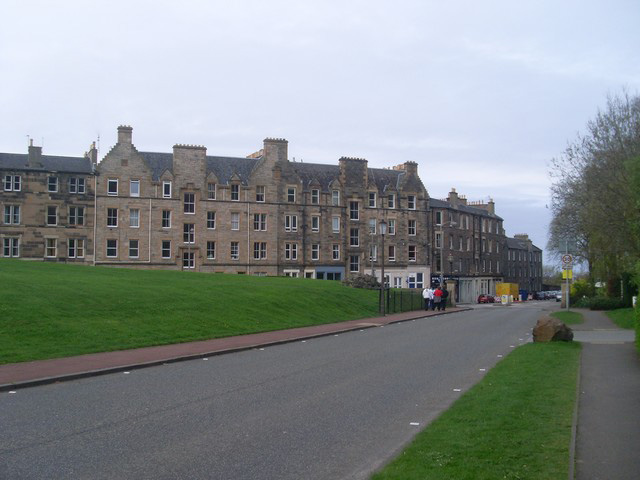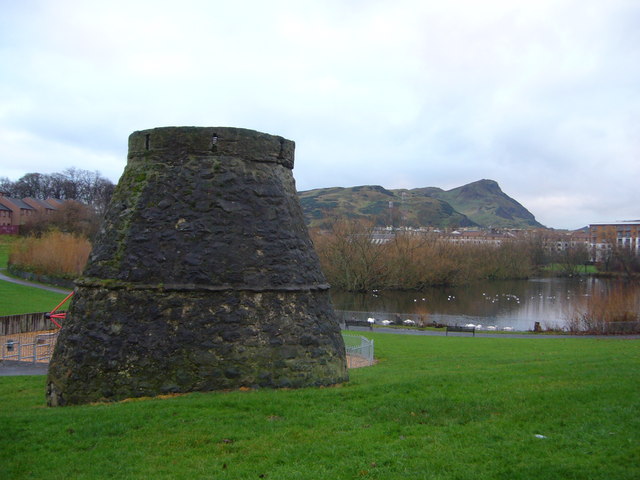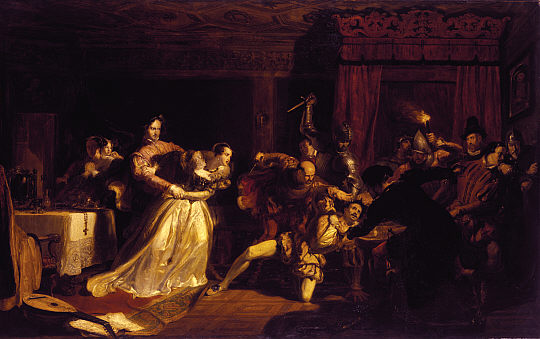|
Abbeyhill
Abbeyhill is an area of Edinburgh, the capital of Scotland. Abbeyhill is one of the oldest parts of the city, taking its name from Holyrood Abbey, a major historic religious site. The main east-west thoroughfare through the area is London Road, laid in the 1820s as part of the Calton development of the New Town. This superseded an older road to Haddington which still skirts the north side of the Holyrood Park. As with many other parts of the city, the area has varying definitions. Generally it may be taken to mean the part of town lying between Holyrood Park (and perhaps The Palace of Holyroodhouse itself) to the south; London Road and adjoining streets to the north; Calton Hill and the yards of Waverley Station to the west; and Meadowbank to the east. It is in the locale of the Scottish Parliament building, contains several old churches and other historic sites, and looks onto the Palace of Holyroodhouse. Geography The suburb is largely composed of streets of Tenement ... [...More Info...] [...Related Items...] OR: [Wikipedia] [Google] [Baidu] |
Abbeyhill Railway Station
Abbeyhill railway station was a railway station located in the Abbeyhill area of Edinburgh. It was served by trains on several Edinburgh local rail services. The station was on the line that branched off the East Coast Main Line at Abbeyhill Junction. History Opened by the North British Railway on 1 May 1869, it became part of the London and North Eastern Railway during the Grouping of 1923. The line then passed on to the Scottish Region of British Railways on nationalisation in 1948. The station was closed by the British Railways Board in 1964 along with Piershill, Portobello, Joppa and Musselburgh stations when the Musselburgh branch service was withdrawn. One station platform still exists but is covered by overgrown weeds and shrubs. Abbeyhill Junction Abbeyhill Junction connected the East Coast Main Line towards Abbeyhill railway station. Passenger services stopped using this line in the 1960s but briefly reopened in 1986 as a shuttle service was set up from Waverley sta ... [...More Info...] [...Related Items...] OR: [Wikipedia] [Google] [Baidu] |
Meadowbank, Edinburgh
Meadowbank is a suburb of Edinburgh in Scotland. It is best known for Meadowbank Stadium, a multi-purpose sports facility that opened as an international sports stadium in 1970. The stadium closed in 2017 and was redeveloped as a local sports and athletics facility that was officially opened on 4 November 2022. History The area developed extensively during the Victorian era as Edinburgh expanded eastwards. Holyrood Park lies to the south of Meadowbank. Meadowbank lodge is a Category C listed lodge, built in 1858, that borders the park and Meadowbank. Meadowbank Parish Church is named for the Meadowbank area although is located in Abbeyhill. The church was originally called Hollyrood Abbey Church. It is Category B listed and was built in 1899. Meadowbank retail park lies on the western edge of Meadowbank. The retail park was built in the early 1990s and occupies the former site of a foundry on London Road and a former seven storey Malt house. Geography Meadowbank lies to the ... [...More Info...] [...Related Items...] OR: [Wikipedia] [Google] [Baidu] |
Colony Houses
The colony houses of Edinburgh were built between 1850 and 1910 as homes for artisans and skilled working-class families by philanthropic model dwellings companies. The first development was the Pilrig Model Buildings, near Leith Walk. Later developments across the city were built by the Edinburgh Cooperative Building Company Limited, founded in 1861. The founders of this company were influenced by the Reverend Dr. James Begg and the Reverend Dr. Thomas Chalmers, ministers of the Free Church of Scotland, who campaigned to improve the housing conditions of the poor. Description Streets with colony houses are found in ten locations within Edinburgh: * Abbeyhill * Dalry Place, Haymarket * Leith Links, Leith * Lochend Road, Lochend * North Fort Street, Leith * Rosebank Cottages, Fountainbridge * Shaw Colonies, Pilrig * Shandon * Slateford * Stockbridge The developments at Stockbridge, Dalry, Shaw Colonies, and Rosebank Cottages are category B listed buildings. Characteris ... [...More Info...] [...Related Items...] OR: [Wikipedia] [Google] [Baidu] |
Restalrig
Restalrig ( ) is a small residential suburb of Edinburgh, Scotland (historically, an estate and independent parish). It is located east of the city centre, west of Craigentinny and to the east of Lochend, Edinburgh, Lochend, both of which it overlaps. Restalrig Road is the main route through the area, running from London Road, at Jock's Lodge, to Leith Links. It is in the ward of Lochend. History and buildings The place name ''Restalrig'' means ''ridge of the miry land'' (from ''lestal'', a northern dialect term meaning ''mire'' and ''rig'', Scots and northern English meaning a linear field or land-holding). It is first mentioned as Lestalric in 1165, when Edward de Lestalric built a church on the site. The church was completed in 1210 by his grandson, Sir Thomas de Lestalric. The area, over the following centuries, is variously named as Lestalryk, Restalric or Rastalrig. The Normans, Norman noble family the de Lestalrics were the ancient landowners in the area (including ne ... [...More Info...] [...Related Items...] OR: [Wikipedia] [Google] [Baidu] |
Holyrood Park
Holyrood Park (also called the King's Park or Queen's Park depending on the reigning monarch's gender) is a royal park in central Edinburgh, Scotland about to the east of Edinburgh Castle. It is open to the public. It has an array of hills, lochs, glens, ridges, basalt cliffs, and patches of gorse, providing a wild piece of highland landscape within its area. The park is associated with the Palace of Holyroodhouse and was formerly a royal hunting estate. The park was created in 1541 when James V had the ground "circulit about Arthurs Sett, Salisborie and Duddingston craggis" enclosed by a stone wall. Arthur's Seat, an extinct volcano and the highest point in Edinburgh, is at the centre of the park, with the cliffs of Salisbury Crags to the west. There are three lochs: St Margaret's Loch, Dunsapie Loch, and Duddingston Loch. The ruins of St Anthony's Chapel stand above St Margaret's Loch. Queen's Drive is the main route through the Park. St Margaret's Well, Edinburgh, St Marga ... [...More Info...] [...Related Items...] OR: [Wikipedia] [Google] [Baidu] |
Calton Hill
Calton Hill (; ) is a hill in central Edinburgh, Scotland, situated beyond the east end of Princes Street and included in the city's United Nations Educational, Scientific and Cultural Organization, UNESCO World Heritage Site. Views of, and from, the hill are often used in photographs and paintings of the city. Calton Hill is the headquarters of the Scottish Government, which is based at St Andrew's House,Youngson, A.J. (2001): "The Companion Guide to Edinburgh and the borders", Chapter 9 (Calton Hill), Polygon Books, Edinburgh, UK, on the steep southern slope of the hill. The Scottish Parliament Building and other prominent buildings such as Holyrood Palace lie near the foot of the hill. Calton Hill is also the location of several monuments and buildings: the National Monument of Scotland, National Monument,T ... [...More Info...] [...Related Items...] OR: [Wikipedia] [Google] [Baidu] |
Edinburgh Waverley Railway Station
Edinburgh Waverley (also known simply as Edinburgh; ) is the principal railway station serving Edinburgh, Scotland. It is the second busiest station in Scotland, after Glasgow Central. The station serves as the northern terminus of the East Coast Main Line, from , although some trains operated by London North Eastern Railway continue to other Scottish destinations beyond Edinburgh. History Origins Edinburgh's Old Town, perched on a steep-sided sloping ridge, was bounded on the north by a valley in which the Nor Loch had been formed. In the 1750s overcrowding led to proposals to link across this valley to allow development to the north. The "noxious lake" was to be narrowed into "a canal of running water", with a bridge formed across the east end of the loch adjacent to the physic garden. This link was built from 1766 as the North Bridge and at the same time plans for the New Town began development to the north, with Princes Street to get unobstructed views south over slopi ... [...More Info...] [...Related Items...] OR: [Wikipedia] [Google] [Baidu] |
List Of Schools In Edinburgh
List of schools in Edinburgh is a list of schools in the City of Edinburgh council area of Scotland. It lists schools both within Edinburgh itself, and in outlying villages within the Local government of Scotland, local government boundary. State schools Primary schools Within Edinburgh *Abbeyhill Primary School *Balgreen Primary School *Blackhall, Edinburgh, Blackhall Primary School *Bonaly Primary School *Broomhouse, Edinburgh, Broomhouse Primary School *Broughton, Edinburgh, Broughton Primary School *Brunstane Primary School *Bruntsfield Primary School *Buckstone Primary School *Bun-sgoil Taobh na Pàirce *Canaan Lane Primary School *Canal View Primary School *Carrick Knowe Primary School *Castleview Primary School *Clermiston Primary School *Clovenstone Primary School *Colinton Primary School *Corstorphine Primary School *Craigentinny Primary School *Craiglockhart Primary School *Craigour Park Primary School *Craigroyston Primary School *Cramond Primary School *Dalry, Ed ... [...More Info...] [...Related Items...] OR: [Wikipedia] [Google] [Baidu] |
Scottish Parliament Building
The Scottish Parliament Building (; ) is the home of the Scottish Parliament at Holyrood, Edinburgh, Holyrood, within the World Heritage Site, UNESCO World Heritage Site in central Edinburgh. Construction of the building commenced in June 1999 and the Members of the Scottish Parliament (MSPs) held their first debate in the new building on 7 September 2004. The formal opening by Queen Elizabeth II took place on 9 October 2004. Enric Miralles, the Spanish architect who designed the building, died before its completion. From 1999 until the opening of the new building in 2004, committee rooms and the debating chamber of the Scottish Parliament were housed in the General Assembly Hall of the Church of Scotland, General Assembly Hall of the Church of Scotland located on The Mound in Edinburgh. Office and administrative accommodation in support of the Parliament were provided in buildings leased from the City of Edinburgh Council. The new Scottish Parliament Building brought together t ... [...More Info...] [...Related Items...] OR: [Wikipedia] [Google] [Baidu] |
Holyrood Palace
The Palace of Holyroodhouse ( or ), commonly known as Holyrood Palace, is the official residence of the British monarch in Scotland. Located at the bottom of the Royal Mile in Edinburgh, at the opposite end to Edinburgh Castle, Holyrood has served as the principal royal residence in Scotland since the 16th century, and is a setting for state occasions and official entertaining. The palace adjoins Holyrood Abbey, and the gardens are set within Holyrood Park. The King's Gallery, Edinburgh, King's Gallery was converted from existing buildings at the western entrance to the palace and was opened in 2002 to exhibit works of art from the Royal Collection. Charles III, King Charles III spends one week in residence at Holyrood at the beginning of summer, where he carries out a range of official engagements and ceremonies. The 16th-century historic apartments of Mary, Queen of Scots, and the State Apartments, used for official and state entertaining, are open to the public throughout ... [...More Info...] [...Related Items...] OR: [Wikipedia] [Google] [Baidu] |
Lothian Buses
Lothian Buses is a major bus operator based in Edinburgh, Scotland. It is the largest municipal bus company in the United Kingdom: the City of Edinburgh Council (through Transport for Edinburgh) owns 91%, Midlothian Council 5%, East Lothian Council 3% and West Lothian Council 1%. Lothian operates the majority of bus services in Edinburgh, and is a significant operator in East Lothian, Midlothian and most recently West Lothian. It operates a comprehensive night bus network, three routes to Edinburgh Airport, and owns the subsidiary companies Lothian Country, East Coast Buses, Edinburgh Bus Tours, Lothian Motorcoaches and Eve Coaches. History The company can trace its history back to the ''Edinburgh Street Tramways Company'' of 1871, also involving at various times the tramway companies of ''Leith'', ''Musselburgh'' and ''Edinburgh North''. The City Council ('' Edinburgh Corporation Tramways'' Department) took over operation of the tramways in 1919, at which time most of t ... [...More Info...] [...Related Items...] OR: [Wikipedia] [Google] [Baidu] |








